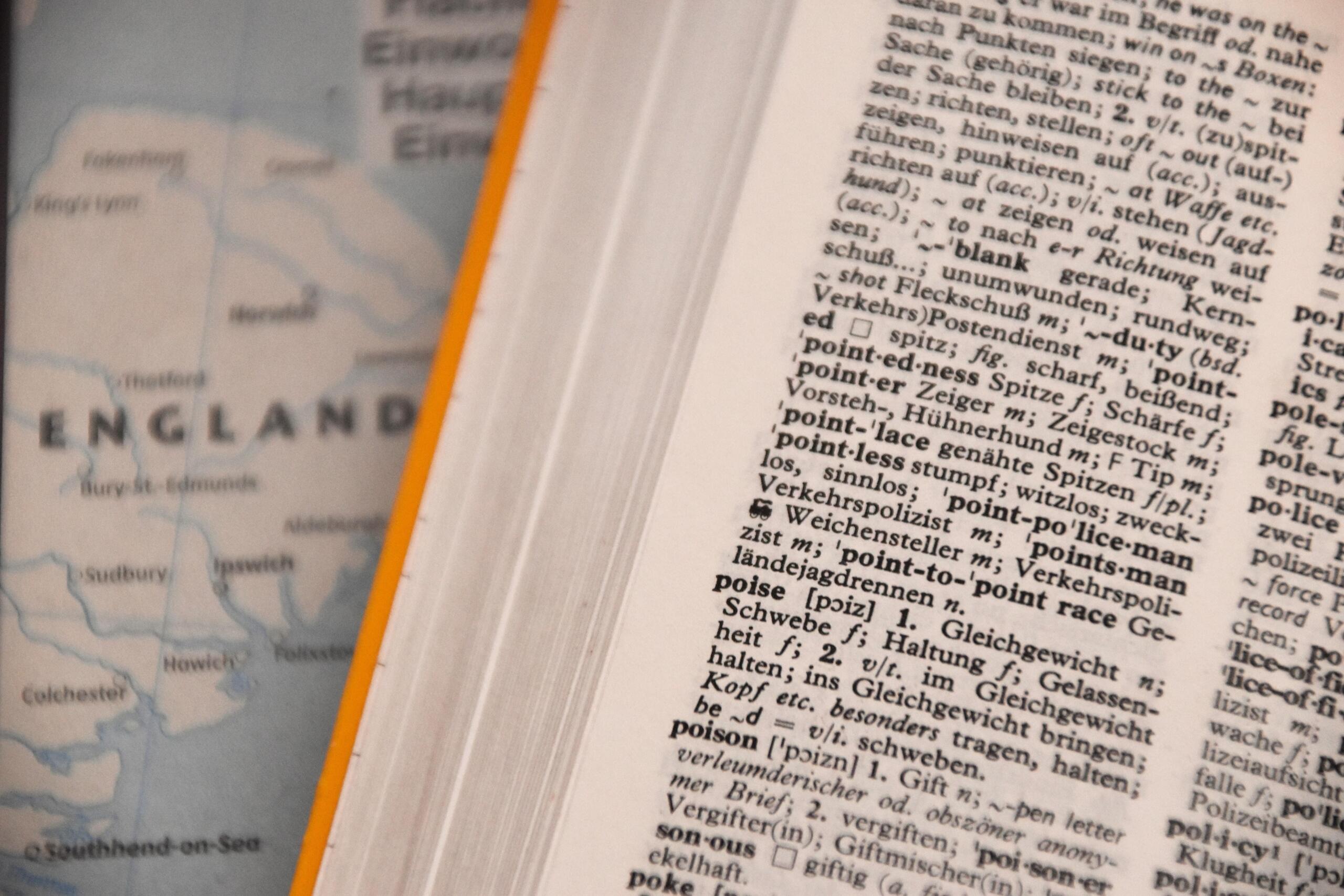I bet you never thought that you would find English on the list of West Germanic languages. We would, generally, think that this term would only really apply to German and closely related languages. The Germanic family of languages is much larger and includes East and North Germanic languages.
Interestingly, the main difference between these groups is that the West Germanic languages list group includes English, making it the largest group, since English is the most widely spoken West Germanic language on a world-wide scale.

Characteristics and History
These languages form a part of a group of Indo-European languages, a significant language family originally encountered in southern and western Eurasia.
The West Germanic languages list includes the majority of the languages of Europe, with the West Germanic languages developing in the environs of the North Sea, the Elbe River and Rhine-Weser region.
Scholars have had great difficulty in establishing the precise relation between the three groups of Germanic tongues, because of a lack of scripts and evidence. Nevertheless, the West Germanic language group has a number of features that distinguish it from the East and North Germanic languages. These characteristics, developed since the Early Middle Ages, include morphological, phonological and lexical conventions.
The six modern standard languages that have evolved, among others, are West German dialects, including English, Dutch, Frisian, German, Afrikaans and Yiddish. Each of these has developed in a particular region and each has undergone a different evolutionary journey which led to the creation of the languages which we know today. What follows is an overview of the aforementioned West Germanic languages.
West Germanic Ursprache
There is some debate, among scholars, about the existence of a West Germanic protolanguage, which came about after the East Germanic languages detached, between the first and second Century BC.
-

English, a West Germanic language. - Source: Unsplash
This split drew together the Northwest Germanic languages and brought about the creation of three language groups, traditionally called ‘West Germanic’:
- North Sea Germanic, related to Old Saxon and Anglo-Frisian;
- Weser-Rhine Germanic, associated to Dutch; and
- Elbe Germanic, connected to most Middle German and the Upper German dialects of Old High German.
Several characteristics that are indicative of the split from East Germanic languages include the linguistic innovations below:
- The evolution of the umlaut (ä, ë, ï, ö, ü);
- The change in sound of ‘z’ to ‘r’: and
- The emergence of the demonstrative pronoun, which became known as ‘this’ in Modern English.
This is a very controversial period, amongst linguistics, because of the shortage of written evidence. Notwithstanding, there are many differences between the West Germanic, East Germanic and North Germanic languages and these are evident, nowadays, in the language similarities and differences of Northern, Eastern and Central European countries.
English
English came about through the migration of early Germanic people to Great Britain. Most closely related to Low Saxon and Frisian, the English language has also been strongly influenced by languages such as Latin and French. The English language has grown and matured over at least 1 400 years and is currently the most spoken language in the world and is also the third-most spoken native language world-wide, after Spanish and Standard Chinese.

Frisian
Not as successful as English in its spread, the Frisian language is today spoken in three main areas: North Frisian along German Schleswig’s west coast, East Frisian in the German Saarland and West Frisian in the Friesland province of the Netherlands, amounting to under 10 000 speakers altogether.
Frisian originated, about one thousand years ago, in the area along the North Sea coast and then extended itself from today’s North Holland up towards German Schleswig and the nearby off-shore islands. Since it never expanded to the extent that the English language did, it is thought of rather as a dialect and not as an official language.
Flemish, Dutch and Afrikaans
Dutch is the official and national language of the Netherlands, and, along with French, one of the national languages of Belgium. The language is also spoken in Suriname, a former Dutch dependency, as well as in the Netherlands Antilles.
The Dutch language is very uniform and had retained the same written form in Belgium and the Netherlands. Just like German, it does, however, have several dialectical varieties, depending on the region and country. Standard Dutch is utilised for official purposes. The different dialects each have a particular accent which typifies the region of its origin and has a marked influence on the culture and identity.
Dutch was strongly influenced by “Franconian” (South Germanic) speakers on the one side and Germanic speakers of the North Sea on the other.
This interaction took place mainly between the 7th and 8th centuries, when early Carolingian and Merovingian powers moved into the western coastal regions and established themselves in regions occupied by the North Germanic group.
One of main characteristics of the Dutch language, in terms of its structure, is the pronounced evolution of the i-umlaut (ï), whilst in all the other North and West Germanic languages, the umlaut affected all back vowels: ä, ë, ö and ü.
Flemish is a dialect of Dutch and is often referred to as Southern Dutch or Flemish Dutch. Flemish is native, or endemic, to Flanders which is a region in northern Belgium.
Beyond Flanders the language is also spoken, to a certain extent, in Dutch Zeelandic Flanders and in French Flanders. It is a variety of speech, situated between the standard Dutch and vernacular dialects. It is regarded as an “in-between language” or tussentaal and incorporates the sound inventory and vocabulary of the Brabantic dialects. Brabantian is, in fact, the chief contributor to Flemish.
Afrikaans, from the Dutch Afrikaansch, meaning African, was originally derived from the Dutch language and is one of the 11 official languages of South Africa. Although they are different languages, they are mutually intelligible and share a common colonial history.
Afrikaans flowed from a colonial form of Dutch in the then Cape of Good Hope (the Cape Colony) in the days when the first European settlers had started to inhabit the southernmost part of Africa.
How Did Afrikaans Develop?

The Dutch language and its derivatives only gained a presence in “The Cape” in 1652, when Jan van Riebeeck was assigned the task of creating a refreshment station there. The first mixing of Dutch dialects and other non-Dutch languages started to occur, as there were also large numbers of French and Germans present in the region.
A very important factor in the development of Afrikaans was the rise of a Creolised version of Dutch among the slave population and the indigenous people of the Cape. This concentrated intertwining of cultures and languages created Afrikaans.
Afrikaans developed over a period of almost 300 years, and several Afrikaans dialects have emerged. Afrikaans was declared an official language in 1925, and, in the process, totally displaced Dutch in South Africa.
In terms of lexicon, Afrikaans is pretty close to Dutch, but has numerous syntactic innovations and a simplified morphology.
German
Another West Germanic language which developed in Central Europe during the Early Middle Ages was German. This came about with the rise of Old High German at the time of the ‘High German consonant shift’. Currently, it is the official language in three European nations: Austria, Switzerland and, of course, Germany.
The written form is very uniform between these countries, because Standard German is employed as the norm. The spoken dialects and forms of the language are, however, far more diverse than English and its dialects.
The dialects are there due to historical reasons. These reasons include the various Germanic tribes scattered across Central Europe and how the different regions have developed their own dialects and cultural identities around it.
Yiddish
Finally, Yiddish was a very important West Germanic language with about 11 million speakers before the Second World War. Sadly most of the Jews who lost their lives in the Nazi Holocaust were Yiddish speakers.
There are still Yiddish speakers around the globe today, including native speakers and those who use it as a second language. Today, most Yiddish speakers live in the United States and Israel.
Yiddish is an unusual Germanic language, as it includes Germanic features along with Slavic, Hebrew-Aramaic and Romance language elements.
The Yiddish language developed during the 10th century, when Jews from France and Italy settled in the Rhineland. A short while later, these Jewish communities moved to Slavic territory in response to the Crusades and the persecutions that followed the Black Death.
Slavic languages had a major impact on the development of Yiddish. Because it was spoken in a large number of countries and cultures, the language is of great interest to scholars and linguists, particularly because of its particular characteristics and the diversity of its different dialects.
A Large Family
The West Germanic family is an old, diverse and wide one, encountered in numerous countries around the globe, where the different dialects are influenced by the regional and local identities and cultures.
The West Germanic languages have very similar backgrounds. However, historical events, such as the high German consonant shift, the Migration Period and regional and local influences, have created the dialects and languages which we know today.
So, if you not sure which of these languages you would like to study, it doesn’t really matter!
There will definitely be one to stir up the linguist in you!















